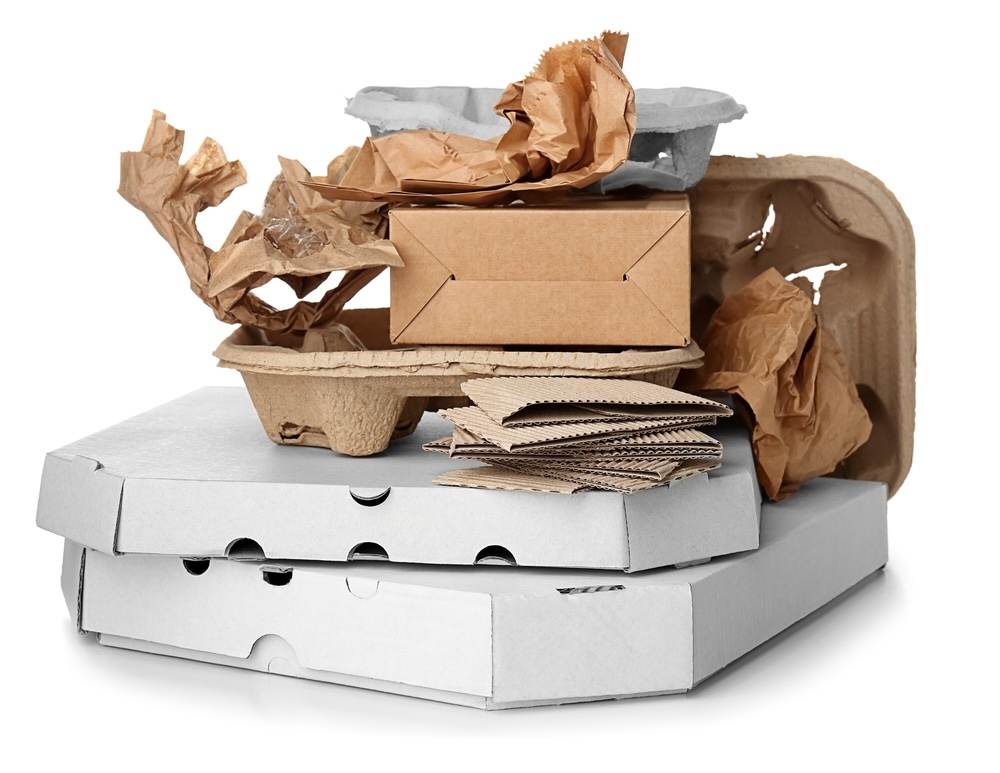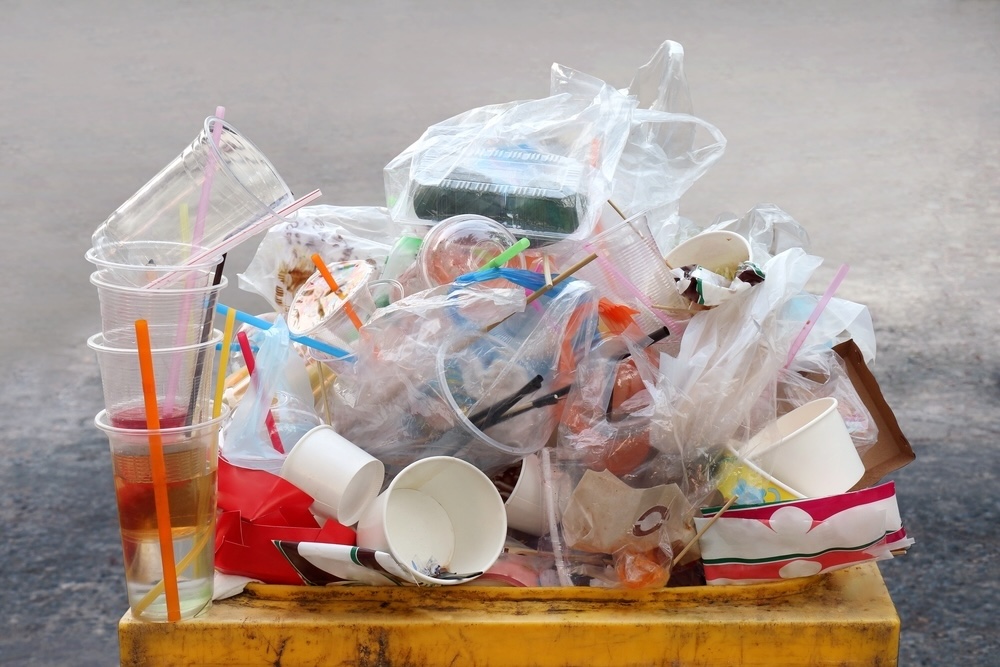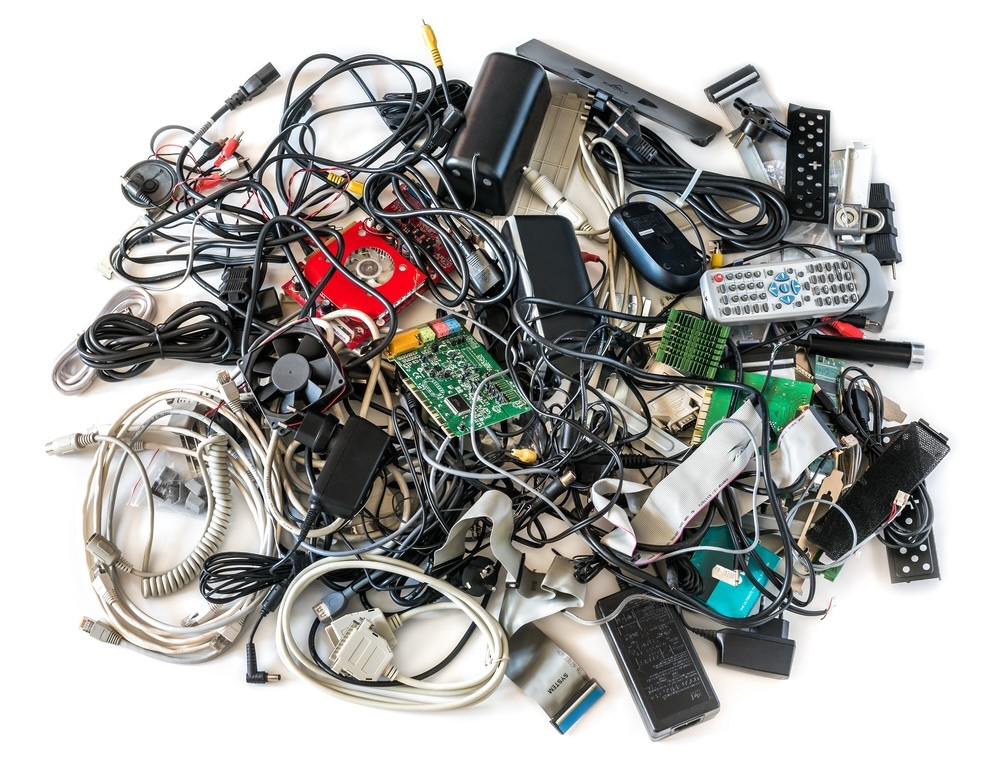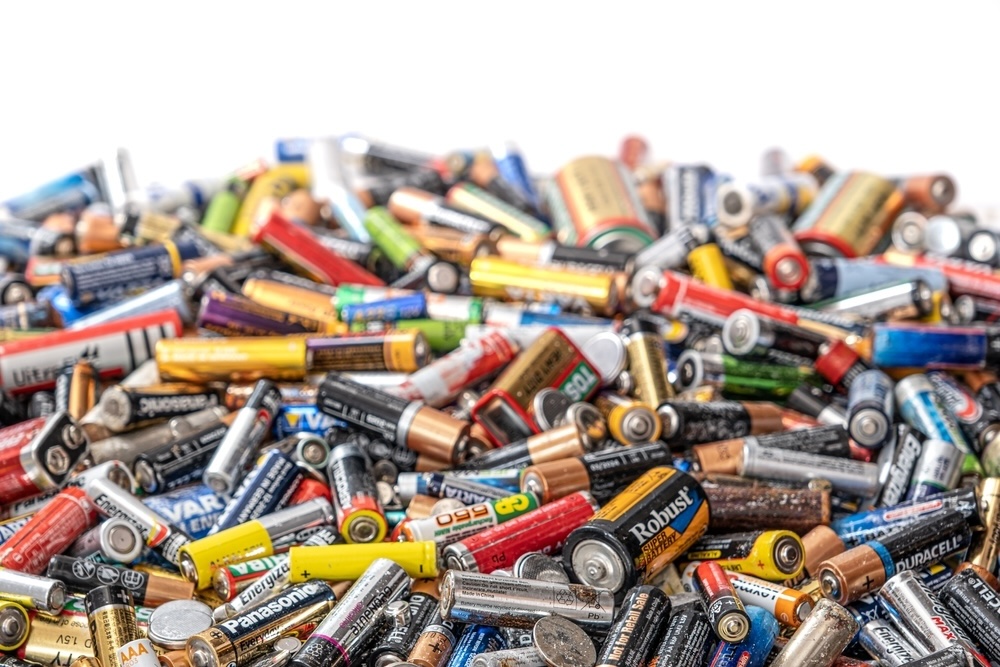Things That Can Be Recycled

Things That Can Be Recycled
In our relentless quest to minimize waste and preserve the fragile equilibrium of our ecosystem, recycling emerges not merely as an act of environmental conservation but as a fundamental societal imperative. As global populations swell and consumerism escalates, the resultant waste generation also soars, posing an unprecedented threat to our planet's health. In the face of this daunting challenge, recycling stands as a beacon of sustainability, a pivotal practice within our grasp that offers tangible benefits. It invites every individual to be a steward of the environment, turning the simple act of sorting trash into a powerful gesture of ecological responsibility. By placing items in the recycle bin, we are doing more than just clearing space in our homes; we are contributing to a larger, vital process that significantly reduces the burden on our planet's natural resources. Every glass bottle, piece of cardboard, or scrap of metal we recycle is one less item plundered from nature. The energy we conserve with each recycled item whispers a promise of cleaner air, the water we save echoes in healthier oceans, and the reduction in greenhouse gas emissions illuminates a path towards stabilizing our climate.
Moreover, the practice of recycling mitigates the detrimental impacts of raw material extraction, such as deforestation, water pollution, and habitat destruction. It also spurs innovation in recycling technologies and sustainable materials management, creating green jobs and fostering economic growth that doesn't come at the expense of the environment. The ripple effects of recycling are felt across the globe, from the bustling cities with their soaring skyscrapers to the remote villages where the footprint of humanity is barely seen. As we stand at the crossroads of environmental consciousness, recycling does more than just recycle materials—it recycles hope. Hope, that with each bottle, can, and newspaper reclaimed from the clutches of waste, we are one step closer to a planet that thrives. Hope, that through the concerted efforts of communities, businesses, and governments, the vision of a sustainable world is not just a distant dream but an attainable reality.
In this article, we will explore the extensive list of items that can be effectively recycled. We'll navigate through the maze of materials, from the ubiquitously recognized to the surprisingly obscure, and detail how each can be reintegrated into the cycle of use. This exploration is not just an educational expedition but a clarion call to action, urging us to reconsider what we discard and recognize the latent value that lies in what we consider waste.
1. Paper and Cardboard

Among the everyday items we encounter, paper and cardboard are perhaps the most familiar faces in the recycling arena. These materials form the backbone of our recycling efforts, with a vast array of products falling under this category. Newspapers that carry the day's events, magazines that showcase the world's stories, envelopes that have delivered messages, junk mail that fills our mailboxes, phone books that connect us, and cardboard boxes that bring goods to our doorstep—all these have a lifecycle that can extend far beyond their initial use.
When we recycle paper and cardboard, we're participating in an essential conservation cycle. Each ton of recycled paper can save approximately 17 trees, 380 gallons of oil, 7,000 gallons of water, and 4,000 kilowatts of energy. This equates to enough energy to power the average home for six months—a striking statistic that underscores the importance of recycling these materials.
The recycling process for paper and cardboard is efficient and well-established, converting old products back into pulp which can then be remade into new paper products. This cycle can be repeated five to seven times with the same fibers. It’s a remarkable process that illustrates the potential for resource efficiency and waste reduction.
It's critical, however, to ensure that these materials are free from contaminants before they enter the recycling stream. Food contamination can degrade the quality of the recycled material. Likewise, non-paper components such as plastic coatings, stickers, and certain types of ink can disrupt the recycling process. These must be removed to ensure that the recycling process is as effective and clean as possible.
Furthermore, by choosing to recycle paper and cardboard, we're helping to reduce the need for new paper production, which can be a water-intensive process. It also means less pollution and fewer greenhouse gases, as producing recycled paper generates 74% less air pollution and 35% less water pollution than producing new paper from virgin wood pulp.
In conclusion, by recycling paper and cardboard, we’re not just reusing fiber; we’re also conserving our forests, saving energy and water, and reducing our environmental footprint. It's a simple act with profound consequences, and it starts with something as simple as sorting your recyclables at home or work.
2. Plastics

Plastics have woven themselves into the fabric of daily life, so much so that it's hard to imagine a day without encountering a multitude of plastic items. They come in many shapes, sizes, and compositions, each with a resin identification code ranging from 1 to 7. These numbers make it easier to sort and recycle plastics properly, as each type requires a different recycling process.
The most commonly recycled plastics are the ones we come across daily—water bottles, soda bottles, milk jugs, laundry detergent containers, and various food packaging items. These are typically made from polyethylene terephthalate (PET, #1) and high-density polyethylene (HDPE, #2). These plastics enjoy a robust market for their recycled counterparts and can be remolded into new containers, textile fibers, or even furniture.
However, the world of plastics is vast and complex. Not all plastics are as easily recycled as PET and HDPE. Some, like polystyrene (PS, #6) or other more rigid or multi-layered plastics, can be more challenging to process and thus are not accepted in all curbside programs. Plastics like PVC (#3), due to their chemical composition, pose difficulties in recycling and carry potential health risks.
It's vital to be aware of your local recycling program's guidelines, as they can vary widely. Some areas have advanced facilities that can handle a broader range of plastics, while others may be limited. Inappropriate plastics can contaminate the recycling stream, leading to a whole batch being sent to the landfill instead of being repurposed.
Recycling plastics is not just about keeping them out of landfills and oceans; it's about reducing the demand for new plastic production. It takes significantly less energy to create products from recycled plastics than it does to manufacture them from scratch. By using less energy, we reduce carbon emissions and contribute to the fight against climate change.
Moreover, recycling plastics can lead to innovative uses. Recycled plastics are being transformed into construction materials, automotive parts, and even fabrics. This not only creates a second life for these materials but also sparks creativity in developing sustainable solutions to our plastic dependency.
In essence, the act of recycling plastics extends beyond environmental action—it's a step towards transforming our throwaway culture into one that sees value in what we discard. It's a commitment to rethinking our consumption patterns and recognizing that with each plastic item we recycle, we're contributing to a healthier planet.
3. Metals

Metals stand out in the recycling world due to their exceptional capacity for recovery and reuse. Items made from metals such as aluminum, steel, and tin are not just recyclable; they are perpetually recyclable, which means they can be recycled over and over without degrading their properties. This infinite recyclability presents a stark contrast to other materials that might suffer a loss of quality over successive recycling processes.
Aluminum cans, in particular, are a recycling success story. They can be found in virtually every recycling program and are one of the most recycled items globally. What makes aluminum uniquely sustainable is that it maintains its quality throughout the recycling process and requires a fraction of the energy to recycle compared to the energy needed for producing new aluminum from bauxite ore. In fact, recycling a single aluminum can save enough energy to run a TV for three hours.
Steel cans are also commonly recycled. Typically used to package food items like soups, vegetables, and pet food, these cans are made from a material that does not weaken after recycling. The steel industry has been using scrap metal in its production for over a century, reducing energy consumption and mining waste in the process.
Recycling metals is not just environmentally wise, it's also economically smart. The scrap metal industry is a global, multibillion-dollar market that supports jobs and helps keep production costs down for a wide range of products.
When it comes to recycling metals, cleanliness is key. Residues of food and other waste materials can contaminate metal recyclables, making them more difficult to process and sometimes even ruining large batches of material. For example, a significant amount of grease on a tin can or food remnants in an aluminum tray can disrupt the recycling process. Thus, a simple rinse can go a long way in ensuring that these materials are effectively recycled.
Moreover, metals have the advantage of being magnetically sortable, which makes them easier to separate from other recyclables in processing facilities. This efficiency in sorting further supports the effectiveness of metal recycling programs.
To summarize, metal recycling is a powerhouse in waste reduction efforts. By conscientiously recycling our metal goods, we contribute to a loop of sustainability that cuts down on waste, conserves energy, and reduces the need for new resource extraction, all while bolstering economic growth in the recycling sector.
4. Glass

Glass is another champion of the recycling process, thanks to its ability to be recycled an infinite number of times without any degradation in purity or quality. This durability and resilience make glass an ideal candidate for continuous recycling, contributing to environmental sustainability and resource conservation.
The process of recycling glass involves crushing the used glass into small pieces, known as cullet. This cullet is then melted and reshaped into new glass products. The energy savings from using cullet versus new materials is significant; for every 10% of cullet used in production, energy use drops by 2-3%, because the melted cullet lowers the temperature required to transform raw materials into glass.
Glass recycling isn't just about saving energy; it's also about reducing the amount of waste sent to landfills. Unlike organic materials, glass doesn't break down over time, so a glass bottle thrown away today could essentially sit intact in a landfill for a million years. Recycling these bottles and jars means they get a new life as another container, or even as material for new roads and building projects.
When recycling glass, separation by color is sometimes necessary because the presence of colored glass in a batch of clear glass can alter the clarity of the finished product. Some recycling programs might require you to separate glass by color—clear, green, and brown—or they may have advanced sorting systems that do it for you.
Just as with metals, cleanliness is crucial when recycling glass. Residues left in glass containers can contaminate entire batches and cause problems during the recycling process. Furthermore, while labels and small bits of paper usually burn away during the melting process, larger pieces of non-glass material need to be removed to ensure a clean and efficient recycling process.
Glass recycling does have its challenges; transportation costs can be high due to its weight, and the presence of ceramics, stones, or some types of lightbulbs can disrupt the recycling of glass if they enter the stream. However, the benefits far outweigh these challenges. By recycling glass, we're participating in a legacy of sustainability that will benefit the planet for generations to come, turning what could be waste into a resource that never wears out.
5. Electronics

Electronic waste, commonly referred to as e-waste, represents a growing concern in our increasingly digital world. The category encompasses a wide range of devices that we use in our daily lives and at work: computers, smartphones, tablets, televisions, and even larger household appliances like refrigerators and washing machines. As technology advances at a rapid pace, the lifecycle of electronic devices has significantly shortened, leading to an ever-increasing amount of e-waste.
The disposal of e-waste requires special attention due to the complex mix of materials and components inside these devices, some of which are hazardous. Heavy metals such as lead, mercury, and cadmium, along with chemicals like brominated flame retardants, are present in various electronics. If not handled properly, these substances can leach into soil and water or release toxic fumes if burned, posing severe environmental and health risks.
On the flip side, within this e-waste lie valuable metals like gold, silver, copper, and palladium. Recovering these materials not only has significant economic value but also reduces the environmental impact associated with mining for new metals. For example, the gold content in a single ton of mobile phones is higher than that in a ton of gold ore. Hence, e-waste recycling can become a source of precious metals and other materials, which can be reused in the manufacturing of new products.
Recognizing the importance of managing e-waste, many local governments and private organizations have set up dedicated recycling programs for electronics. These programs provide a way to dispose of electronic devices responsibly. They ensure that the hazardous materials are treated or disposed of safely, and the valuable elements are reclaimed and fed back into the production cycle.
When recycling electronics, it's crucial to wipe any personal data from the devices for security reasons before handing them over to a certified e-waste recycler. This step ensures that sensitive information is not at risk of being recovered once the device leaves your possession.
E-waste recycling also aligns with the principles of the circular economy, where the goal is to maintain the value of products, materials, and resources for as long as possible. By correctly recycling our electronic devices, we are reducing the volume of waste, conserving natural resources, and enabling a more sustainable production and consumption pattern in the technology sector. It's a vital process that calls for collective action and responsibility, encouraging us to think about the entire lifespan of the gadgets we so heavily rely on.
6. Batteries

Batteries, from the single-use types that power our remote controls to the rechargeable ones found in our smartphones and electric vehicles, play an essential role in our daily lives. Yet, their disposal is a complex issue due to the toxic and reactive chemicals they contain. Batteries are made from various heavy metals and other substances, such as lithium, nickel, cadmium, and lead, which can pose significant environmental and health risks if not properly managed.
The recycling of batteries is a critical process because it prevents harmful chemicals from entering the environment and reduces the need for new raw materials through the recovery of valuable metals. Specialized recycling facilities are equipped to handle the complex chemistry of batteries. These facilities have the technology to safely dismantle batteries and extract valuable components which can be reused in the manufacture of new batteries and other products.
For example, lithium from lithium-ion batteries is in high demand for use in new batteries for consumer electronics and electric vehicles. Nickel and cadmium recovered from nickel-cadmium batteries are used in various types of industrial applications. Even the less valuable materials from batteries, like plastics and other metals, are separated and recycled into secondary raw materials.
The process typically involves sorting batteries by type and chemistry, mechanically processing them to break them down, and then using various chemical processes to extract and purify the valuable metals. These methods ensure that almost all components of a battery are recycled, minimizing waste and environmental impact.
However, the recycling rate for batteries is still lower than for many other products, partly due to the lack of awareness about how to properly dispose of batteries and the scarcity of convenient recycling options. Many consumers are unaware that thrown-away batteries can leach toxic substances into landfills, potentially contaminating soil and groundwater.
To address this, many regions have implemented battery recycling programs, and regulations require retailers to accept batteries for recycling. Consumers are encouraged to bring used batteries to designated drop-off points often found in stores, schools, libraries, or public buildings. These programs are vital in ensuring safe and effective recycling and in educating the public about the importance of responsible battery disposal.
In conclusion, the recycling of batteries not only mitigates the environmental and health risks associated with improper disposal but also contributes to resource conservation and the reduction of greenhouse gas emissions. As technology advances and our reliance on batteries increases, enhancing battery recycling infrastructure and consumer participation becomes ever more important.
7. Textiles and Clothing

Textiles and clothing encompass a vast range of materials, from everyday apparel and household linens to industrial fabrics. Unlike more homogenous recyclables like glass or metals, textiles present unique challenges due to their diverse compositions and the presence of mixed materials such as blends of cotton and synthetic fibers. Despite these complexities, textile recycling is a growing field that offers significant environmental benefits.
When clothing and textiles are recycled, they are first assessed to determine their condition. Items that are still in good shape can be resold or donated, extending their useful life and reducing the need for new resources. This not only helps to keep usable items out of landfills but also supports charitable activities and promotes a more sustainable consumption model.
For textiles that are no longer suitable for wear, specialized recycling programs come into play. These textiles are collected and sorted by material type and color. Sorting by color reduces the need for re-dyeing, saving energy and avoiding pollutants associated with textile dyeing processes. Once sorted, the fabrics are processed depending on their condition and material type. This may involve shredding the materials to break them down into fibers.
The recycled fibers can then be used in various applications. For instance, cotton garments can be transformed into cleaning rags or processed back into fibers that are spun into yarn for new textiles. Synthetic fibers, like polyester, can be broken down and reformed into new polyester fiber, used for everything from new garments to filling material for items such as sleeping bags and winter coats. Other uses for recycled textiles include manufacturing insulation material, carpet padding, rubberized playgrounds, and even automotive insulation.
One of the most promising areas of textile recycling involves upcycling, where old clothing is not just turned into similar products but is instead transformed into higher-value items. This approach not only recycles the material but also adds value to the end product, thereby encouraging a more circular economy in the textile industry.
However, the technology and infrastructure for textile recycling are still developing, and the industry faces significant hurdles. For instance, separating blended fibers (such as cotton-polyester mixes) can be technologically challenging and economically unfeasible with current technology. Moreover, the quality of recycled fibers can be lower than that of virgin fibers, limiting their applications.
Despite these challenges, the potential for textile recycling is vast. As awareness of environmental issues grows and technology improves, more efficient methods of recycling textiles are being developed. This progress is essential, given the enormous waste and environmental impact of the fashion industry. Through increased efforts in textile recycling, we can reduce waste, conserve resources, and pave the way for a more sustainable fashion industry.
Conclusion
Grasping the breadth of "things that can be recycled" is crucial in our shift towards more sustainable waste management. This guide has explored some of the most common materials suitable for recycling, yet the universe of recyclable items is continually expanding. Advances in recycling technology are regularly broadening what can be processed and reused, thereby enhancing our ability to divert waste from landfills and reduce our environmental footprint. As consumers, our role is pivotal. Awareness and adherence to local recycling guidelines are essential for ensuring the success of recycling efforts. These regulations can vary significantly from one area to another, reflecting local infrastructure and market conditions for recycled materials. By staying informed and compliant, we ensure that our recyclables are indeed recycled, rather than ending up in landfills due to contamination or incorrect disposal.
Active participation in local recycling programs is more than a civic duty; it's a tangible way to contribute to environmental conservation. Every item we recycle is a step toward reducing our reliance on raw materials, conserving energy, and lowering greenhouse gas emissions. This collective effort can lead to substantial changes in how resources are used and managed globally. Furthermore, engaging with and supporting policies and programs that promote recycling can drive innovation and infrastructure development. This support can come in various forms, from advocating for better recycling facilities in our communities to choosing products made from recycled materials, thus creating a demand that sustains the recycling industry.
In conclusion, our daily choices about recycling matter profoundly. By understanding what can be recycled and actively participating in and supporting recycling initiatives, we not only help keep our environment clean but also contribute to the broader global goals of sustainability and resource conservation. This is how we ensure a healthier planet and a sustainable future for generations to come.
Topics
Check more articles on our blog

What Are The Paper Towel Alternatives For Leading A Sustainable Life?

How to Recycle and Repurpose Old Textiles: A Comprehensive Guide

How to Recycle and Repurpose Old Shoes
